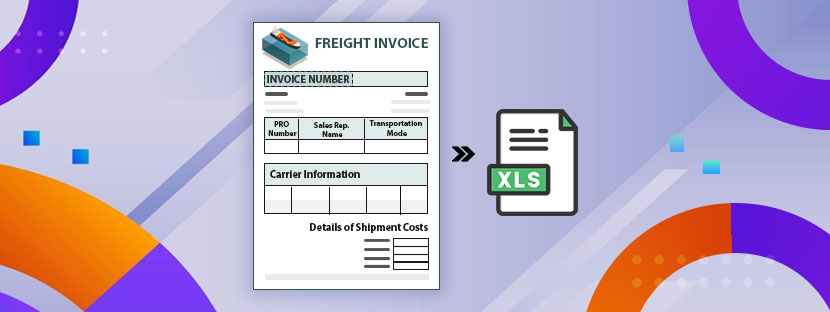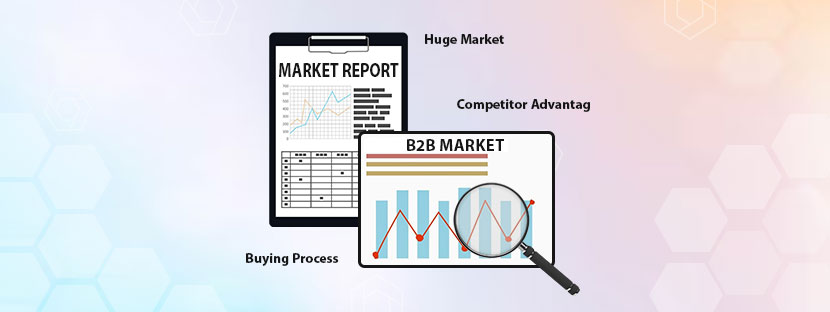Paying freight dues on time is super important to keep the economy alive. It comes from a greater economic sense. But in reality, processing freight invoices on time can save you from meeting unnecessary costs, per se penalties. Other than that, it improves cash flow operations and the timely preparation the financial reports.
Movement of goods across the nations or even contents happens via freight transport. The US freight market will stay in a recovery state in 2025, which indicates the movement of freights will increase further.
Therefore, a huge pressure on freight bill processing is coming later this year. You have to prepare your system if you’re dealing in the same industry. Anyway, this blog will tell you how to process freight bills in steps and show you all the nuances of freight billing in detail.
Get it started then.
What’s a Freight Invoice or Bill?
A freight bill or invoice is a financial document generated by the transportation provider and shared with the shipper. The document consists the a report only related to the cost of transportation services for freight shipments. The shipper has to pay the service charges to the transportation provider on the mutually agreed date.
This bill is generally a document that describes cargo in freight shipments, name, and contact information for the shipper as well as the receiver, delivery destination, delivery of shipment, and so on.
Freight processing is completed in various stages and each step needs the fullest attention to perform. Let’s dig this a little further.
Information Must be Included in the Freight Bill
It’s the responsibility of a transportation company to generate a freight invoice whenever they receive shipment orders. The invoice must carry relevant information about the shipment. The invoice document includes all the charges involved in the shipment and other matters. It also includes the following information;
Invoice Number
A unique numerical code is assigned when the invoice is being generated. This invoice number is vital and extremely useful for payment tracking, matching bills, and overall shipment monitoring.
PRO Number
A PRO or “progressive” number is a combination of Standard Carrier Alpha Code (SCAC) and tracking number. This number helps in tracking freight shipments and organizing freight information.
Transportation Mode
It reveals the medium of transport of the freight items. Whether it is transported through truckload, or less than truckload (LTL), air, rail, or ocean, you need to mention that.
Bill of Landing Number
Transportation carrier companies assign this number to track freight shipment status.
Carrier or Consignee Information
Both parties of the deal, which means the issuer of the invoice and the company that consigned the shipment, have to provide all information. This includes contact names, addresses, registration numbers, and other important details.
Details of Shipment Costs and Accessorial Charges
All charges including the base cost, ancillary charges, size and class of the shipment, etc must be there. Also, note that you must put the reasons for adding accessorial charges for the consignment.
Importance of Freight Invoice Processing
Freight billing is a vital task of the shipment process as it lays down specific details of the shipping agreement between various parties. It generally contains information related to shipment including the charges. If we consider the crucial nature of this document, it helps businesses in various ways. Let’s point out them here.

Remember, invoice information acts better when it is utilized well in the business. Therefore, you must have a system that processes invoices fast. You can also try outsourcing invoice processing services to address freight information faster.
Not coming back to the importance of freight invoice processing. Here you go;
- Documenting essential information and keeping the accounting records would become much easier.
- Analysis of the in-dept nature of billing is possible when you have all the processing information.
- Verifying shipment, payments, and tracking of the items is smoothly possible because of the quick freight processing.
- Establishing good connections with vendors will become easy as quick processing ensures quick vendor payment.
To run a product-based business, it is extremely important to check whether your customers are receiving your products on time. It also ensures your vendors are getting paid on time and you maintain a good relationship with them.
Keep These Things in Mind When You Process Freight Invoices
Following a step-by-step process can ensure easy disbursal of freight bills. Make sure you follow all the above-mentioned steps carefully to process the invoices.
1. Check for all Invoice Details
Quickly scan through the freight bill and cross-check whether all the bills carry the right information or not. The information you must check on the bill is –
- Shipper and consignee information
- Invoice number
- Carrier information
- PRO number
- Bill landing number
- Shipment description and cost
- Freight mode
- Due date to receive the shipment
Further, the following information you’ll get from from carrier once it receives the delivery. The carrier issues the final invoice to the shipper. Check and find the following information in the final invoices;
- Date of shipment
- Shipper and consignee information
- Description of the shipment
- Pickup and drop-off locations
- Summary of the shipment charges & payment dues
2. Verify all the Information
Once you get all the information, the next process starts, which is invoice verification. Basically, it’s the freight bill auditing process where multiple things you need to verify and confirm. First, you have to compare the details of the invoice with the actual rate mentioned in the freight bill. If you see any change in data then you have to notify it. Otherwise, minor misinformation will appear in the accounting system. It could lead to possible vendor miscommunication in the later phase.
So, take advantage of the freight invoice auditing process and reconcile all issues before they even arise. You can make changes or edit information before you make the payments.
3. Making the Payament and Record it
After completion of the auditing process, the shipper will release the payment and submit the payment document to the carrier. They will share the information using any mutually agreed payment platform. Once the payment is done, the invoice processor will record the payment data along with the invoice serial number in the accounts database.











